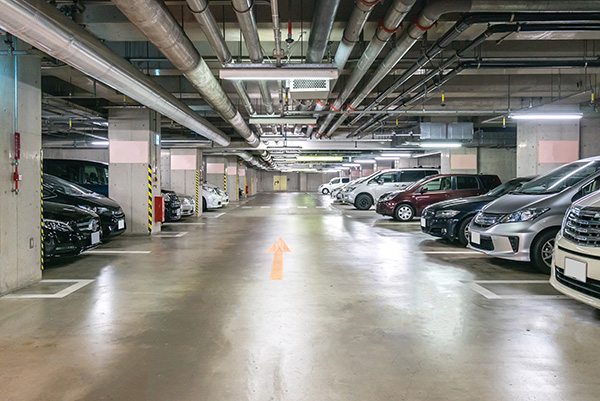
Installing Gas Monitoring in Parking Garages
April 5, 2021 | By Robert Presser
For new or retrofit projects, the flexibility of wireless sensors provides multiple benefits.

(photo: VICHIE81/Adobe Stock)
For HVAC contractors looking to enhance safety while easing installation and maintenance in a wide range of new and retrofit facilities, advanced wireless gas detection systems are a solution for monitoring toxic gases in associated parking structures and shipping/loading bays.
Although wired installations have long been the go-to for gas monitoring networks in these structures, wireless systems are proving increasingly effective, particularly for retrofits or expansions of existing systems.
Simplify Installation
The easy installation of wireless gas detection devices can often result in wider and more complete coverage of large enclosed, semi-enclosed, or remote parking structure areas than has been the case with traditional wired systems. In addition, the flexibility of sensor placement can also improve safety by enabling positioning where it is most needed, unencumbered by the limitations of routing electrical lines or conduit.
However, since wireless units can face challenges when significant obstructive structures can weaken the signal, the wireless devices are best suited for relatively open spaces. Against such a challenge, it is still possible to boost or repeat the wireless signal to gain sufficient coverage.
While wireless gas detection systems can ease installation in new facilities, in some older structures requiring retrofits this approach can sometimes be the only feasible solution.
In older facilities, everything HVAC was a standalone 120-volt unit, which required inter-wiring relays to start the fan. You had line voltage coming in, you had control line voltage going out to a relay board where you were doing your fan logic. There was no software; it was all hard-wired.
In really old facilities, you might even find a pneumatic sampling system gas detection device, which was literally as big as a refrigerator.
Traditionally, obstructions such as steel beams and concrete walls also make it difficult to run wiring. A truly reliable wireless system can make it unnecessary to drill through a wall or penetrate a steel beam to run wire and conduit. This approach can eliminate much of the electrical costs, including the labour of licensed electricians, while expediting the project.
In older facilities, it can be difficult trying to reuse an old wiring system not designed for the task. With wireless gas detection networks, all that is required is mounting the sensors and establishing the connection with the system. Wireless systems can even eliminate the need for a control panel.
Technology enhancements
Wireless gas detection systems also reduce maintenance by eliminating cable troubleshooting, as well as lightning and storm-related damage to the main controller from surges carried by the cables.
And when retrofits or expansions of existing systems are necessary, additional wireless detectors can be added without sorting through complex system configurations.
Improvements in sensor technology has also led to the development of greater system reliability while minimizing false positives and excessive maintenance. Instead of yearly calibration, in modern wireless systems, sensors can function for over three years without recalibration.
While contractors and facility management professionals are more familiar with traditional wired gas detection systems, the addition of wireless systems to parking garages provides some important new capabilities.
And whether for new or retrofit, commercial, residential, or multi-use structures, the flexibility of placement and ease of installation of wireless options provide positive steps towards boosting safety and speeding project completion. <>




